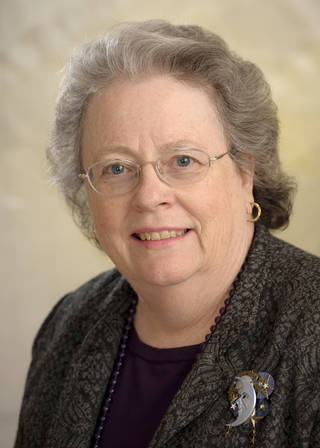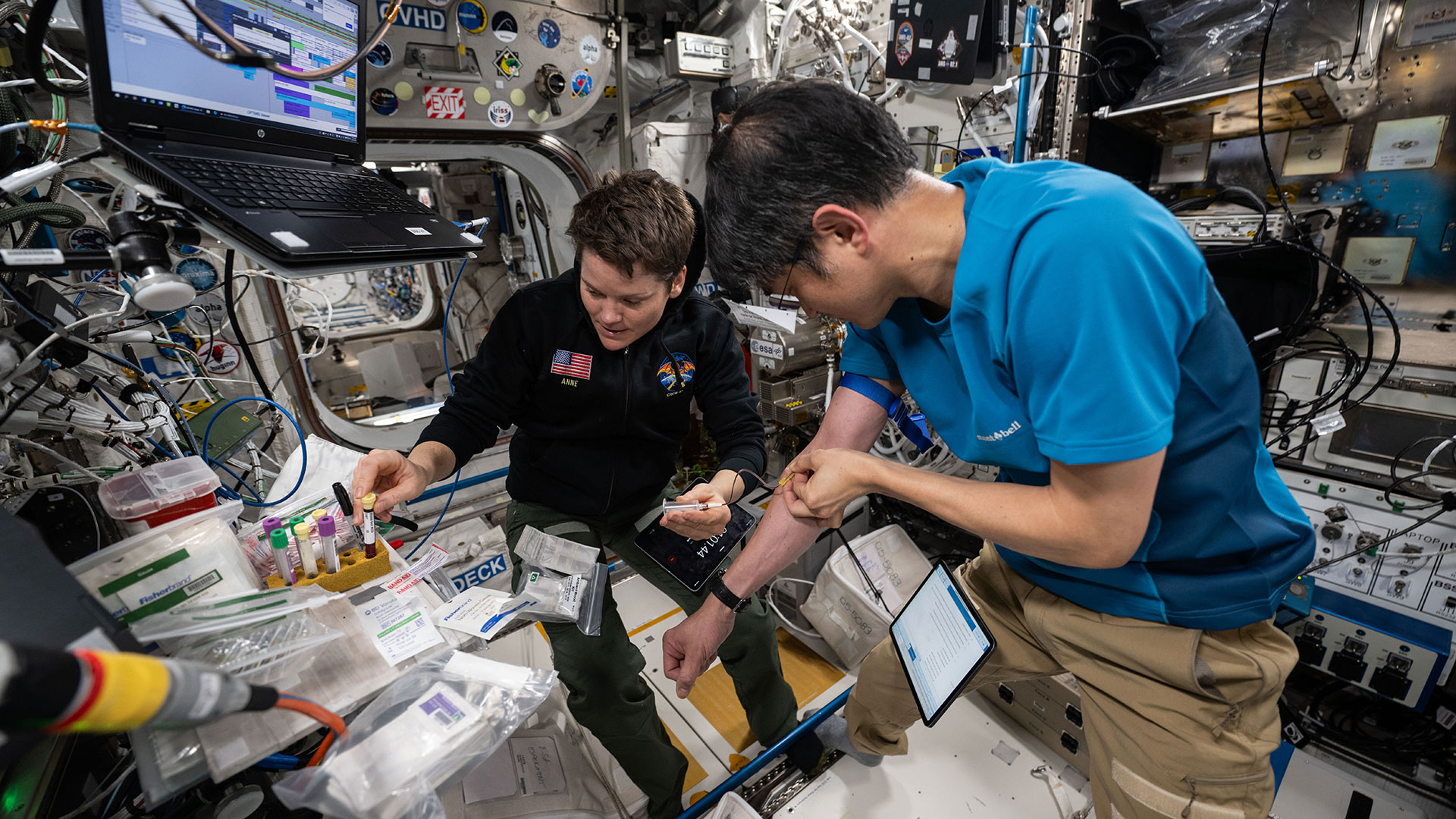Reaching Out: EPO Professionals Spread the Science Word
"Building Community: The Emerging EPO Profession" conference kicked off yesterday in Tucson, Arizona. This is the 117th annual meeting of the Astronomical Society of the Pacific, a worldwide organization dedicated to improving the understanding, appreciation, and enjoyment of astronomy. There are more than 350 creative people here at the conference. Connie Blackwood, Director of Education and Public Outreach at Universities Space Research Association, said, "I'm here to meet lots of people that I wanted to talk to. I am eager to learn more about other EPO programs, and make connections with EPO pros."
Like many attendees I've spoken with, Yaël Naze an astronomer and educator at the Institut d'Astrophyscique et the Geophysique, Leige, Belgium came "to share the experience and experiments in EPO."
This is an international experience with people representing 9 countries and 34 states. "Registration for this meeting has far exceeded our expectations. This speaks to the importance that all these groups attache to science education and outreach (EPO)" said Katy Garmany, immediate past president of ASP, and an EPO scientist at the National Optical Astronomy observatory (NOAO) in Tucson which operates Kitt Peak.
Today, ASP is widely known for both its leadership in astronomy education and outreach and its services for professional astronomers. ASP's members cover the spectrum of the astronomy-interested public from amateur astronomers, students, teachers, and families to professional researchers, engineers, and space scientists. ASP is one of the few organizations that brings together such a broad constituency with the aim of learning and sharing astronomy.
Although private donors have and continue to make significant contributions (such as Paul Allen's support of the Allen Telescope Array) NASA and the NSF federally fund most US astronomical research. Beyond publishing research results for the scientific community, NASA, NSF and private donors value engaging the public in their science, technology and engineering accomplishments. Practically, this has spun off a cadre of EPO professionals that team with space missions, observatories, and research programs to develop and implement EPO programs. They collaborate with schools, museums, planetaria, amateur astronomy clubs, colleges and universities as well as all varieties media to learn and teach astronomy. Dr. Donald Walter, of South Carolina State University in Orangeburg, said "I came here to network for EPO people and work on future collaborations with people." SCSU is a historically Black university that has been working with NASA for a decade to bring more underrepresented people into science and technology careers. An article in this month's "Physics Today" features Walter's physics and space science programs.
This year's conference focuses on the growing EPO profession. ASP's President, Dennis Schatz, VP of Education at the Pacific Science Center in Seattle, WA, said "This conference is exciting because it brings together a broad EPO community to reflect upon what we do. We're focusing on what one needs to know and do to do our jobs better. What are the things that will help to advance the profession? This meeting is significant because it's likely the first meeting with this focus. With ASP's leadership, we are moving in the direction of continuing this development at the next meeting at STScI in Baltimore next year. We're learning from people outside of the field of astronomy and education."
The EPO profession crosses boundaries. It's part of space missions, ground-based and airborne observatories, science centers and museums, planetariums and educational institutions. EPO pros-astronomy educators-are here from more than 195 different organizations. Vivian Hoette of Yerkes Observatory, University of Chicago, is here to "work with my colleagues, to build collaborations and foster networks, rather than being at a conference where is rub elbows with the colleagues, but focus is on disseminating information directly to the public. This is a terrific opportunity!"
Get the Space.com Newsletter
Breaking space news, the latest updates on rocket launches, skywatching events and more!
Future EPO leaders are here too. Andy Shaner, a graduate student at the nearby University of Arizona, and member of the NASA Phoenix Mission EPO program, is here to "meet many new EPO professionals and to spread the word on the evaluation program that we are conducting for the Phoenix EPO program." Shaner is pursuing a PhD in the CAPER (Conceptual Astronomy and Physics Education Research) program at Steward Observatory working with U of AZ's Tim Slater, the energetic conference chair.
Theresa Roelofsen teaches astronomy at Bassick High School in to a combined group of students from urban and suburban, Bridgeport CT. She operates an observatory at the school, and is one of the select group of US teachers that has telescope time of the Spitzer Space Telescope. She'll travel on to JPL after the meeting to conduct her observations, bringing real space science data back to her classroom a continent away.
The EPO theme attracted other science professionals. Michele Bahr, the NASA Astrobiology Institute (NAI) EPO lead at Marine Biological Laboratory in Woods Hole, MA, came because she's "interested in how you really reach out to people. My personal experience has been narrow, and I wanted a much broader perspective. I wanted to see how other people from different organizations." Bahr just came from her vacation in Yellowstone where she got to see NAI-developed signs explaining the microbes in action at the thermal hotspots. Astrobiology in action.
Anita Krishnamurthi said she came "to find my new community people, to interact with new people, and to network and attend all of the informative and fascinating sessions."
Anita manages the proposals and funding from many of the Science Mission Directorate EPO programs. Like Anita, I'm looking forward to networking, building new collaborations, and learning from my EPO colleagues. So far, it's been a productive and exciting meeting.
The ASP and the SETI Institute collaborate to conduct the education and public outreach program for NASA's Stratospheric Observatory for Infrared Astronomy (SOFIA) and are looking forward to sharing infrared astronomy with the public.
Join our Space Forums to keep talking space on the latest missions, night sky and more! And if you have a news tip, correction or comment, let us know at: community@space.com.

Edna DeVore is a science and astronomy educator and the former Director of Education and Public Outreach for the SETI Institute. She earned an undergraduate degree from the University of Pacific followed by a master's degree in instructional technology from San Jose State and a master's in astronomy from the University of Arizona. In 1992, Edna joined the SETI Institute, where she wrote features on space exploration, astrobiology and more, some of which appeared on Space.com. She was among the first principal investigators to propose projects to NASA's Office of Space Science and receive funding for educational programs. Edna went on to work on education and public outreach for NASA's Kepler space telescope and SOFIA flying telescope missions. Edna received numerous awards during her tenure at SETI, including NASA Honor Awards for her work on Kepler and SOFIA, and Aerospace Awareness Award for Women in Aerospace in 2005. Edna retired in 2013.
